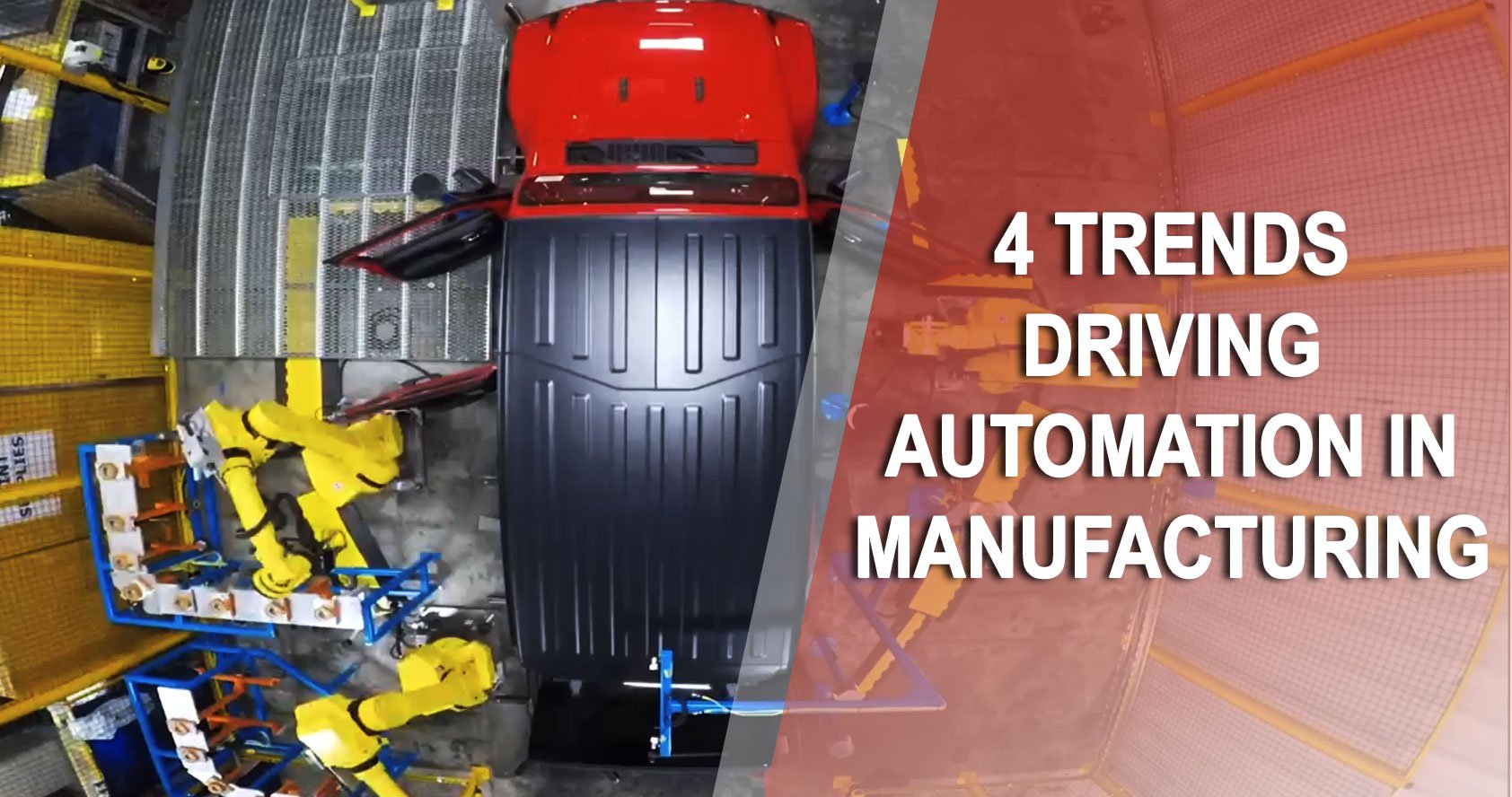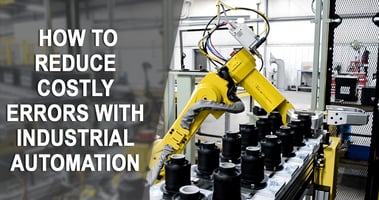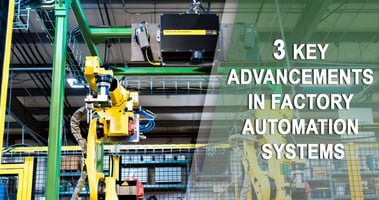The International Federation of Robotics (IFR) estimates that just three years ago, there were...
4 Major Trends Driving Automation in Manufacturing

Manufacturers everywhere are challenged to adopt contemporary business approaches in order to produce more quickly, with greater precision, and for less cost to the organization. Regardless of industry sector or size, manufacturers are driven to consider an array of automation solutions—ones that might have previously been completely unimaginable—as a way to meet evolving needs and stay competitive in the market.
As manufacturing automation becomes less of a commodity and more of a necessity, a host of significant trends are emerging. So, what’s on the horizon for automation in manufacturing, and in what directions are organizations apt to find themselves moving as a result?
Check out these four notable trends impacting manufacturing automation.
1. Acceleration and Permeation of Digital Transformation
It’s no secret that advancing technology is quickly refashioning how manufacturing companies operate their entire businesses. Whether in the interest of efficiency and accuracy or more streamlined operations and greater cost savings, evolving technology has revolutionized manufacturing processes.
But there’s so much more to digital transformation than the idea of turning manual factory lines operated by throngs of workers into automated production systems. There’s the profusion of digital transformation driven by disruptive technologies such as IoT, Industry 4.0, artificial intelligence and robotics.
These realities are majorly impacting not just the production options available to manufacturers, but also the ways in which consumers live, work and buy—all of which affect the demands placed on manufacturers to produce and deliver. This creates a circular pattern of digital transformation begetting more digital transformation.
In order to be successful now and into the future, modern manufacturers are charged with staying on the cutting edge of these burgeoning technologies and making smart, strategic decisions that keep digital transformation at the forefront of their business. The time for planning for the future of automation is long gone; now manufacturing companies must act and implement to stay relevant and profitable.
2. Availability and Application of Manufacturing Data
“Data has long been treated in the manufacturing industry as the orphan nephew living in the cupboard under the stairs,” reads a recent Industry Today article. “While operational and service industries have leapt on the benefits of data as the catalyst of business growth and efficiency gains, the manufacturing sector has been slow to adopt the culture of becoming a data-driven business.”
This reality is quickly experiencing a change of mindset, thanks to the buzz surrounding Industry 4.0.
“Traditionally, manufacturing technology has been split into operational versus information. Where operational technology (OT) has focused on the sensors and software that monitor and control the manufacturing process, information technology (IT) has provided the separate function of data processing and analytics. A way of looking at Industry 4.0 is that it marks the convergence of OT and IT and the real-time interdependence between the process and analytics.”
Many manufacturers concerned with monitoring critical factors like overall equipment effectiveness, downtime, and scrap rates have already begun implementing or refining a process of data collection out of the manufacturing system. But as data becomes even more fundamental and prominent within manufacturing environments, companies will be tasked with integrating data solutions that optimize automation systems, as well as leveraging automation solutions that materialize bigger and better data.
3. Surge in Collaborative Robot Sales and Deployment
Also stepping into the manufacturing scene is the new and rapidly growing technology of collaborative robots, or cobots. Enabling manufacturers to develop automated systems that also integrate flexible production options, collaborative robots are providing the means for companies to not only improve efficiency and quality, but also mitigate the risks of workplace dangers and human error.
According to Manufacturing Automation, “In 2018, global revenues from cobots exceeded $550 million. This was almost a 60 percent increase over 2017. Over 19,000 cobots were shipped.”
What, then, makes collaborative robots so ripe for the future of automation?
“Collaborative robots include a number of technological innovations that make them ideal, when compared to industrial robots, in a number of applications,” explains the Robotic Industries Association. “Demand for collaborative robots, because of their flexibility, safety and productivity, is expected to increase sharply over the next few years, with sustained growth projected over the next decade.
“The foreseeable future of collaborative robots includes robust growth and expansion into a wide range of diverse industries. While some technological barriers still exist for the maturation of collaborative robot technology, other innovations are driving the industry forward and market projections suggest collaborative robots will be increasingly profitable inside and outside of the factory setting.”
4. Focus on Heightened Security Measures
“As industrial organizations grapple with COVID-19 fallout, automation has become an even hotter topic,” indicates a recent IoT World article. Experts fear, however, that the acceleration of automation could drive unforeseen consequences for organizations that don’t focus on security.
While factories continue to progress in terms of adopting smarter automation solutions, the overarching task of maintaining data and network security becomes an incredibly complicated one, and “being lax in terms of industrial automation security can be dangerous. Hobbyist electronics, for instance, may make automating industrial machinery simple, but such products can also provide cyber attackers with a familiar target.”
That’s why it’s increasingly critical to partner with automation specialists and robotics integrators who understand the nature of your entire business system, taking care to account for not only the implementation of technology elements, but also the security of their communication and data components.
“Ultimately, each organization has to evaluate the risks and rewards of digitization and automation. The risk of moving too slowly can be a threat to an industrial company’s longevity just as much as rushing a deployment.”



